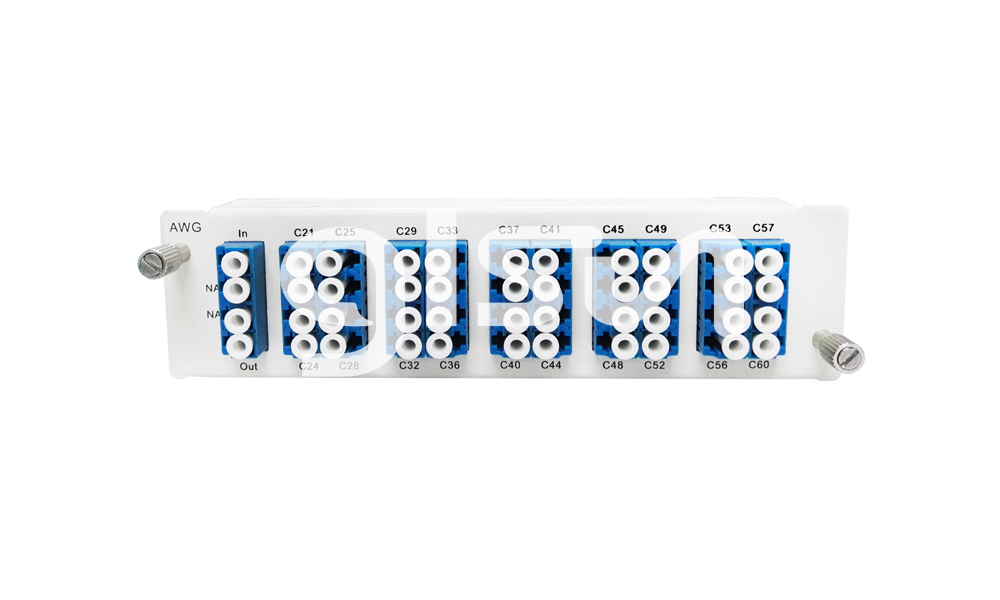Principles and Applications of Array Waveguide Grating
2022-04-28
Array Waveguide Grating (AWG) is the preferred technology in the rapidly developing dense wavelength division multiplexing (DWDM) network. AWG has filtering characteristics and versatility, which can obtain a large number of wavelengths and channels, to realize the multiplexing and demultiplexing of tens to hundreds of wavelengths. By using the matrix form of N×N, different optical signals of N channels can be transmitted simultaneously at N channels of wavelengths, and multifunctional devices and modules can be constructed flexibly with other optical devices.
In addition, AWG also has high stability and good cost performance, very suitable for high-speed and large capacity DWDM system use. AWG is a planar waveguide device based on optical integration technology, which has potential advantages of planar waveguide technology, suitable for mass production, features good repeatability, small size, good insertion loss uniformity, and good thermal stability after temperature control, and can be integrated with active devices to form optoelectronic integrated circuits (OEIC), etc, making it the mainstream technology of optical communication development in the future.
Principles of AWG
After the multiplexed signal light with multiple wavelengths is transmitted through the central input channel waveguide, the diffraction occurs in the input flat waveguide, and the power is distributed on the concave grating of the input, and then coupled into the array waveguide area. Because the end face of the array waveguide is located on the circumference of the grating circle, the diffracted light reaches the end face of the array waveguide with the same phase. Because the adjacent waveguides keep the same length difference, the output light of a certain wavelength of adjacent waveguides on the output concave grating has the same phase difference after transmission through the array waveguide.
The phase difference is different for the light of different wavelength, so the light of different wavelength diffracts in the output flat waveguide and focuses to different waveguide positions of the output channel. After the output of the output channel waveguide, the wavelength allocation, namely the demultiplexing function, is completed. The reverse of this process, that is, if the signal light input is reversed, the multiplexing function is completed, the principle is the same.

Main Applications of AWG
Wavelength Routing
When the optical signal passes through the network node, the route is selected according to its wavelength, without photoelectric conversion. The wavelength determines the transmission path of optical signal, which realizes wavelength reuse and improves wavelength utilization.
LED Spectrum Segmentation Multi-Wavelength Light Source
A low-cost multi-wavelength light source for WDM-PON (Wavelength Division Multiplexing passive optical network) can be obtained by dividing the wide spectrum of LED light using array waveguide grating (AWG).
Optical Add/Drop Multiplexer
In optical signal network, it is often necessary to "separate" part of the signal flow from the node, or "plug" some signal flow into the network transmission system. The device that separates or inserts the signal is called Optical add/drop multiplexer.
Optical Cross Connection
Optical cross connection is mainly used to complete the cross connection between multi-wavelength ring networks, as the node of mesh optical network, the purpose is to realize the automatic configuration, protection, recovery and reconstruction of optical network.
All Optical Transmission Network
In all optical network structure and all optical transmission network, OXC and OADM play the role of information transmission and cross-interconnection.







